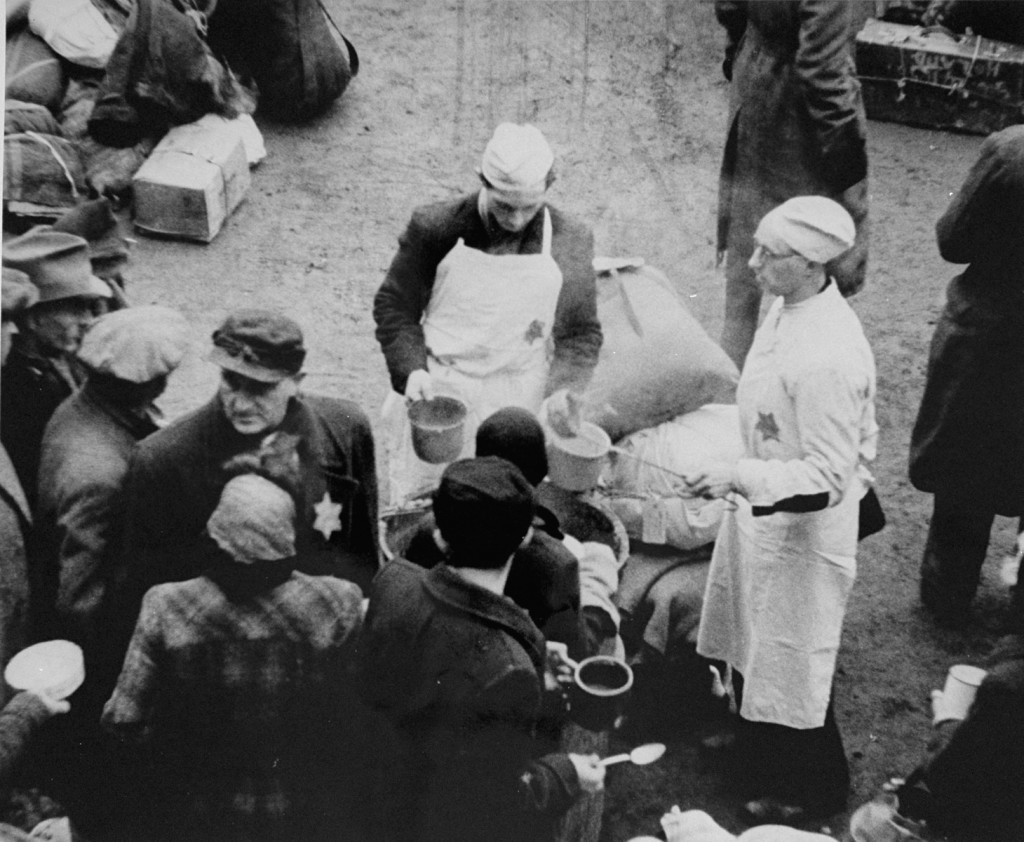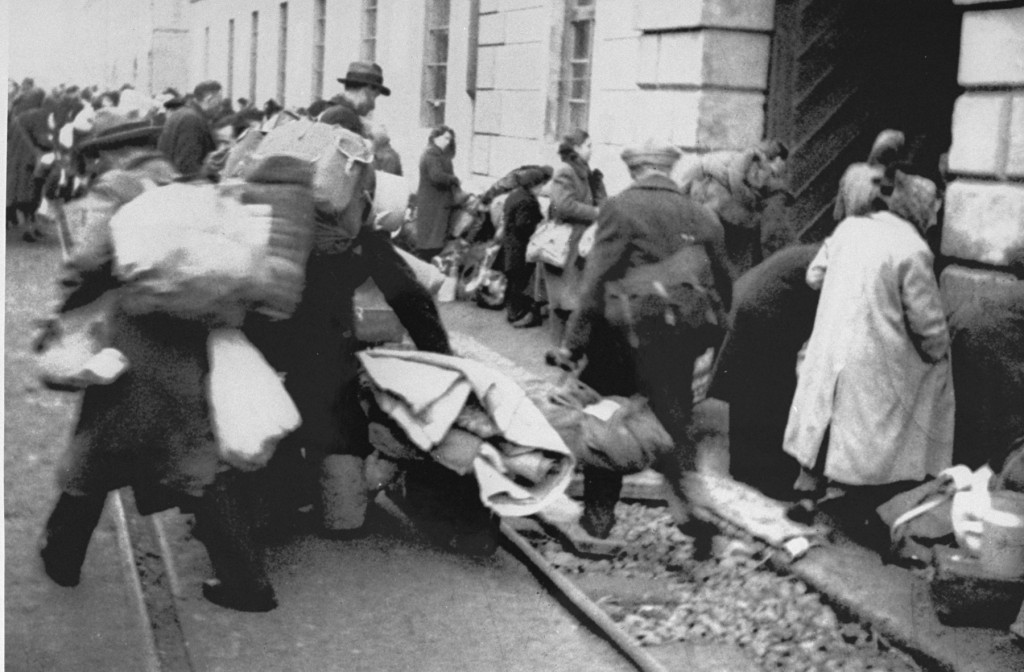
Theresienstadt: Other Prisoners
In addition to Jews from the Greater German Reich and the Protectorate, small groups of Jewish prisoners from other German-occupied countries were sent to Theresienstadt after June 1942.

The largest group included 4,894 Dutch Jews and three French Jews transported from the Netherlands in 1943 and 1944, mostly from the Westerbork transit camp, but also from Bergen-Belsen. Many of the 297 Jews arriving in Theresienstadt from the Netherlands in 1943 were in fact German or Austrian Jews who had emigrated to the Netherlands during the 1930s. The SS deported 3,010 of the Dutch Jews (61.5 percent) to Auschwitz; at least 169 more died in the Theresienstadt camp-ghetto before April 15, 1945. Approximately 1,500 survived.
In August 1943, SS and police units deployed in the destruction of the Bialystok ghetto captured several thousand Jews in hiding. They divided the captives by age (adults and children) and then separated the adults by gender. They shot the adults while those identified as children, mostly 14 years old and under, watched. For reasons that remain unclear but which might have involved a shady and perhaps not serious scheme to exchange prisoners or bargain them for war materials, the SS transferred the children, numbering 1,260, to Theresienstadt on August 24, 1943. Since the older children knew and could provide first-hand knowledge of mass shootings and ghetto deportations and accurate rumors about gas chambers, the camp-ghetto authorities incarcerated all of the children in an isolated barrack, and chose 53 camp-ghetto residents, including a physician, several nurses, and Ottilie Kafka, the sister of noted Czech-Jewish writer Franz Kafka, to care for the children. The 53 caregivers were likewise isolated in a carefully guarded barracks so that they could not pass on the knowledge of their traumatized charges to other camp-ghetto prisoners. On October 5, 1943, for reasons that are equally unclear, but more consistent with German policy, the SS placed the surviving 1,196 children and their 53 caregivers on an outgoing transport to Auschwitz. None of the children or their caregivers survived.
Following the foiled effort of the German authorities to seize and deport the Jewish population of Denmark in early October 1943, the German police shipped the 456 of the 476 Danish Jews they did capture to Theresienstadt, where they lived in a separate compound. The remaining 20 Danish Jews arrived at Theresienstadt in 1944 via the Ravensbrück and Oranienburg concentration camps. The Danish prisoners benefited from the dogged persistence with which the Danish authorities pestered the German authorities to permit supplies to be shipped to the prisoners and to allow Danish Red Cross representatives to visit Theresienstadt. Of the 476 Danish Jews, 423 survived the war. 52 died in the camp; and one was deported, presumably to Auschwitz.
Critical Thinking Questions
- What was the role of Theresienstadt in the Nazi strategy of deception? How was it different from the majority of concentration camps and ghettos?
- Did other camps have multiple purposes? If so, what were they?
- Euphemisms, mild or indirect words or expressions substituted for ones considered to be too harsh or blunt, can hide dangerous or illegal behavior. What expressions did the Nazis use to disguise their intentions or policies?
- Study the visit to this camp by the Danish and International Red Cross delegations. How and why was the reality of the camp disguised from them?

